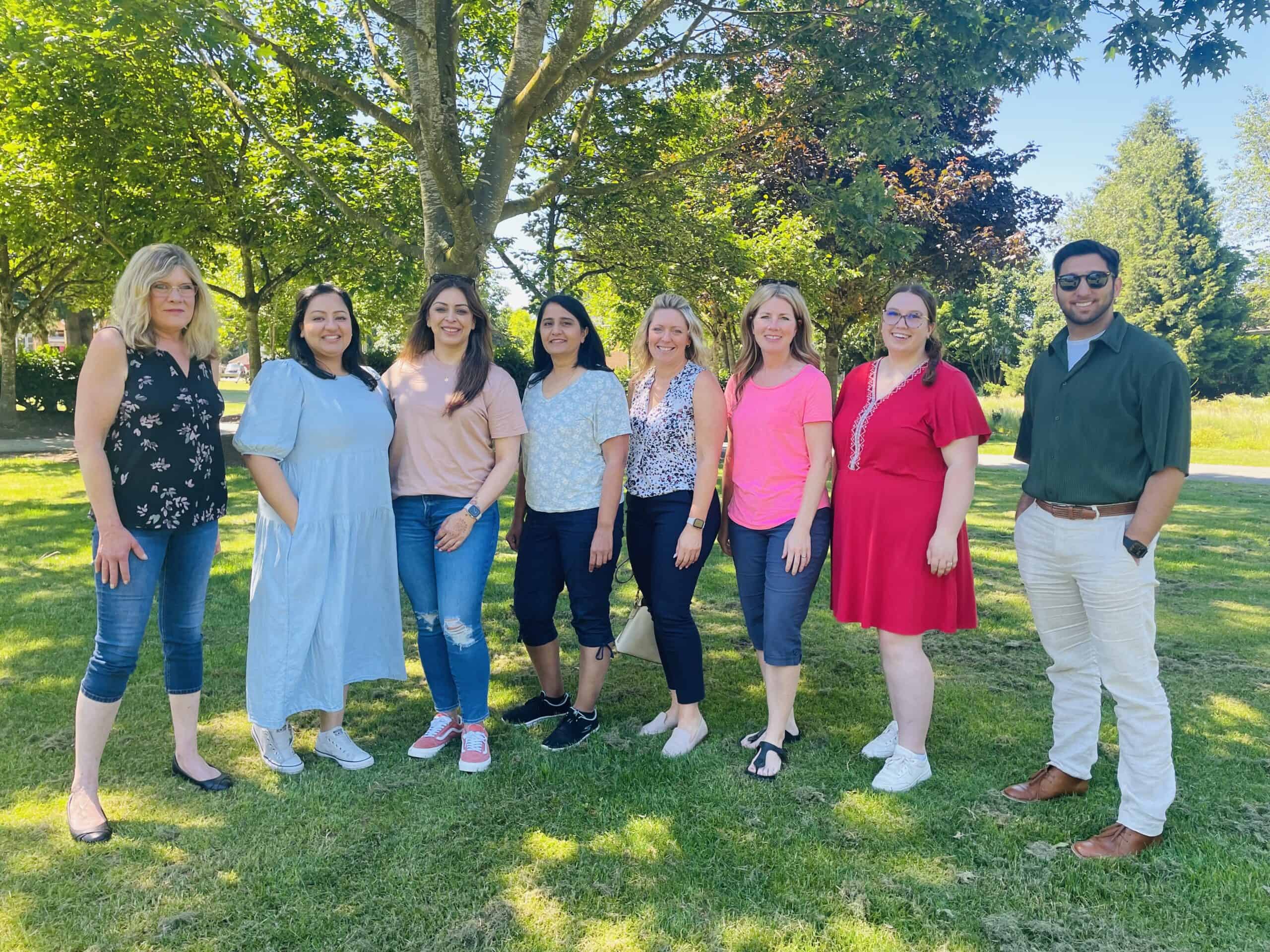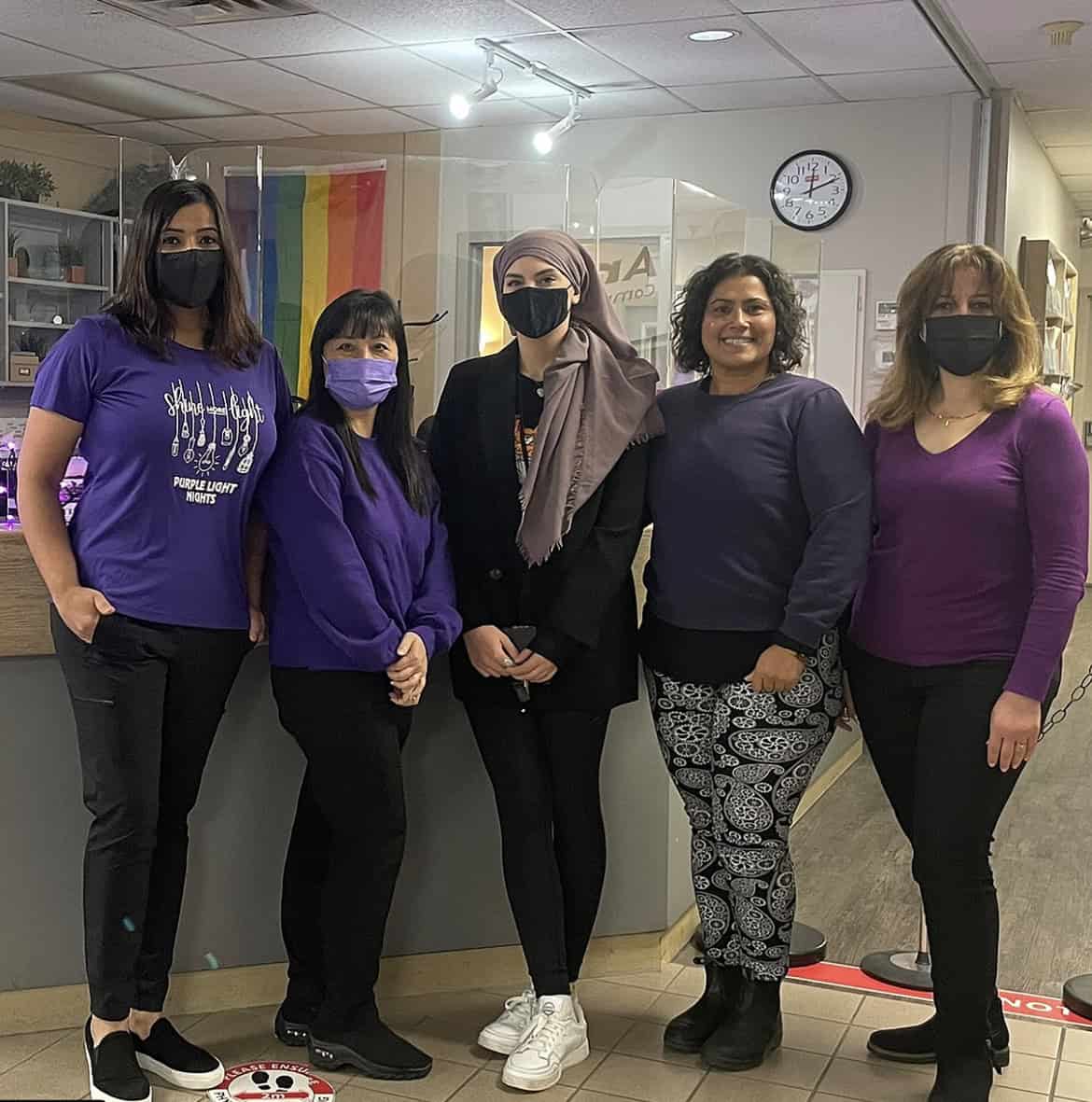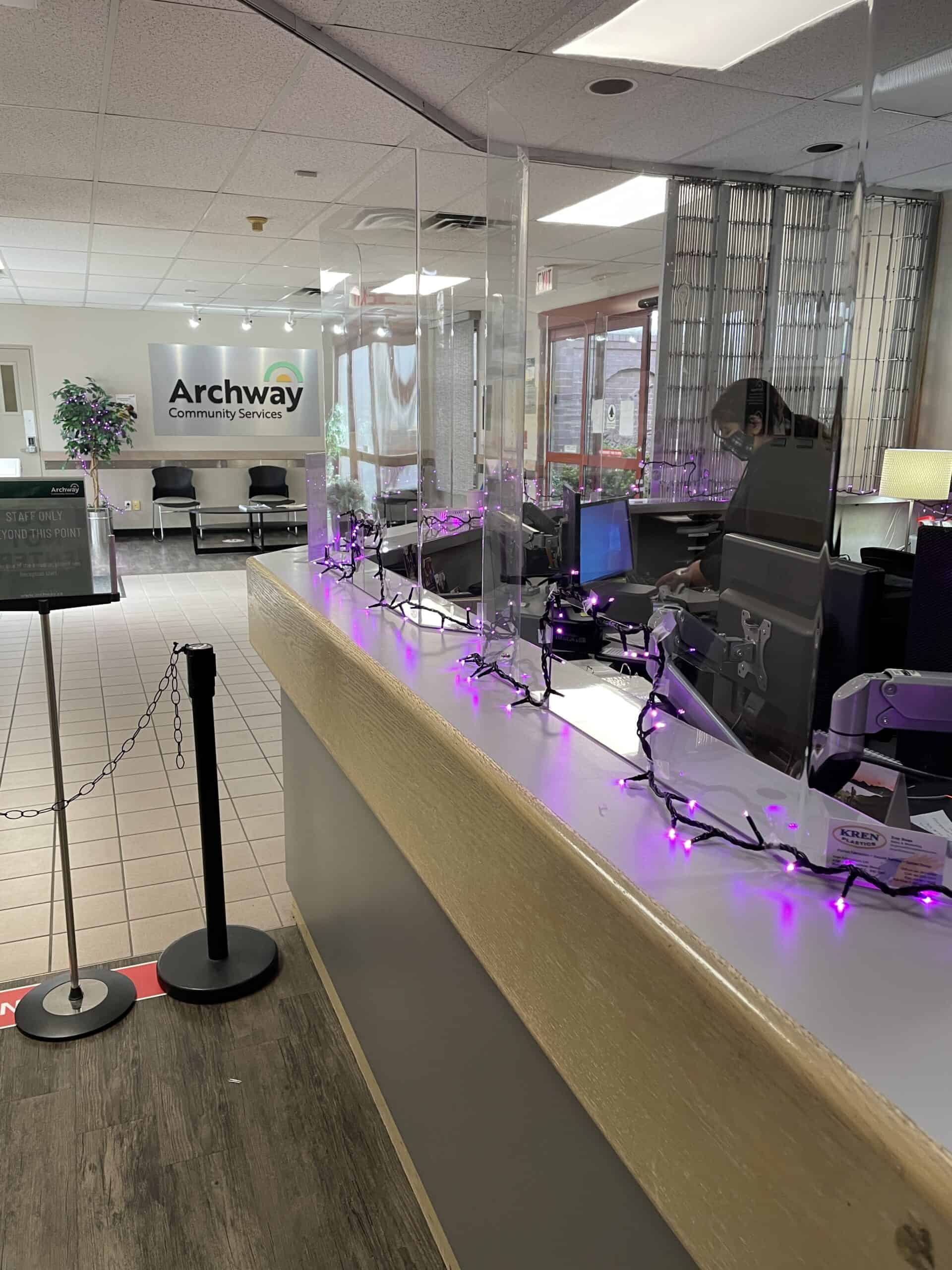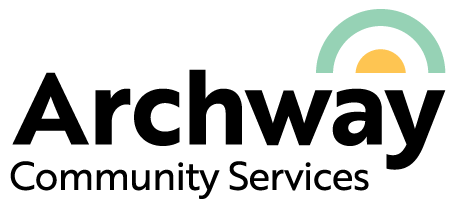
Intimate Partner Violence
Intimate Partner Violence (IPV) is a complex and difficult subject for many reasons. People who have experienced IPV often feel embarrassed to speak about their situation and are unsure if they will be believed. They may be reliant on the abuser financially and fear the consequences of leaving. Emotions are often conflicted with many still feeling love towards their abuser. When children are involved, it complicates things even more.
Current data tells us that women are most often the victims of IPV which is troubling as women are most often the primary caregivers of their child(ren). In these situations, the parent experiencing intimate partner violence may hesitate to ask for support, due to fears of potential involvement of the Ministry of Children and Family Development (MCFD).
Often there is a cycle of violence that gets repeated. Growing up in a family where violence was present can lead to future abusers and victims, although current research tells us that there is tremendous resiliency among those experiencing IPV as children. Without the appropriate support and considerations, children who witness IPV are more likely to experience behavioural and emotional issues as they mature.
For the direct victims, the effects of IPV go beyond the immediate physical injuries they suffer at the hands of the offender. The long-term effects of IPV can include post-traumatic stress disorder, insomnia, poor physical health, and depressed mood.
With so many considerations and outcomes involved in the decision to seek help, the emotional and physical impact on those impacted is concerning, and a moral issue that involves us all. Community help and supports exist for those who have experienced IPV. Whether it has been days or years since the intimate partner violence last took place, victims can look to their communities for help.
Above: The Abbotsford Violence Against Women in Relationships Committee (VAWIR) Team at the 2019 Purple Light Nights event.
“Not everyone experiencing IPV wants to end a relationship, and the collaborative work helps us tackle some of those real-life challenges.”
Specialized Victims Assistance Program
The Archway Specialized Victims Assistance Program (SVAP) is one of the resources available to victims of IPV. SVAP staff provide victims of crime and trauma, as well as their families, with culturally relevant emotional support, justice-related information referrals, and practical assistance.
The program gathers relevant information from Crown Counsel and the police to facilitate a coordinated approach as well as to provide clear and accurate information to clients.
Clients are made aware of their legal rights and walked through the court process to reduce the anxiety that they may feel about the justice system. This can include court tours prior to their court appearance, arranging meetings with crown counsel, and court accompaniment to preliminary hearings and trials. Where possible SVAP can also arrange transportation to hospital, Crown Counsel, and police appointments and support victims in securing transitional housing.
Our staff team will also assist with Crime Victim Assistance applications and Victim Impact Statements and will also refer clients to relevant support groups, private counselling, the Victim Safety Unit, and various community agencies.

The SVAP Team – From Left to Right
Joanne, Taran, Sandy, Lukhvinder, Cher, Stefanie, Megan, Mohammed
Escaping IPV
Aggressors use a range of tactics to keep their victims from speaking out or from leaving their abuser and residence. In one story shared by Detective Karen Burridge, of the Abbotsford Police Department, the aggressor threatened to have his newest partner deported.
The Intimate Partner Violence Unit (IPVU) had been working for years with a client who had been in a relationship with a repeat offender. It was brought to their attention that Jake* was using his new girlfriend Jessica* to accompany him to breach his conditions with his ex-partner.
IPVU was able to contact Jessica who agreed to meet with members of the IPVU in an informal setting. She disclosed the breaches that happened and as she spoke to the IPVU members she disclosed that she was also being abused by the offender. Jessica initially said she did not want to provide a formal statement as she did not trust the police. She was also afraid because she was here on a work visa and Jake had threatened to have her sent back if she reported.
The IPVU team answered her questions, addressed some of her concerns and let her know that she can reach out when she is ready. Jessica reached out several weeks later and said she was ready to report. She said she felt much better after speaking to the IPVU team. She was grateful for the way she was heard and felt comfortable reporting it to the IPVU detective who then took the statement from her and forwarded charges to Surrey where the offence happened.
Jessica was then connected to resources and supports in her own community by the Archway Support Worker. Providing information to the clients and allowing them to make their own decisions is the most powerful thing that can be given to victims of IPV.

Staff dressed in purple in honour of the Purple Lights Campaign
Beginning Days
Back in 1987, Archway recognized a need to support victims of partner violence and the Specialized Victim Service Program (SVAP) was started. The current SVAP supervisor, Lukhvinder Aujla began as a practicum student in 1992 and now works with a staff of nine and oversees a women’s support group for South Asian Women who are victims are IPV.
Lukhvinder shares that there were not a lot of other community supports back when she first started, and victim services workers did a lot on their own.
One of the most significant changes has been the 1993 Provincial Violence Against Women in Relationships Policy, which set out roles and responsibilities of service providers and justice system personnel. The policy has been revised and expanded several times over the years (1996, 2000, 2004 and 2010). The policy mandated that charges must be recommended if a crime was committed instead of simply asking a victim if they wanted to charge the offender, often right in front of the offender.
Lukhvinder remembers that after this policy came into effect, the program started seeing an increase in IPV files especially after the policy was updated in 1996. IPV was also recognized as an issue that the community at large needed to deal with rather than just the families being affected.
Working with Community Partners
In the early 2000’s, various non- profit, community, government, and police agencies began to recognize the need to work in collaboration to help victims of relationship violence. Research also started to show that collaboration between agencies resulted in higher success rates.
Tonya Dupuis, a former police officer who worked for 15 years of her 20-year career with the Abbotsford Police Department (APD) was working as a detective with the APD Major Crime Unit when she was approached and asked to lead the creation and development of a collaborative and specialized investigative unit dedicated to IPV investigations and victim support.
At the time in 2009, there were only two well established police units of its kind in British Columbia. Tonya recalled being deeply passionate about the endeavor as she recognized that there was a real need for police organizations like APD to support and move toward a more holistic and comprehensive approach when dealing with IPV in their communities. Tonya admitted that the task was not without its challenges and barriers, but it also came with a great deal of reward that included tremendous collaborative efforts and support of many community-based organizations and government agencies, like SVAP.
During the research and development phase, APD also recognized the importance and need for victims of IPV to retain an elevated level of confidentiality and support throughout the process. To implement this, the Archway SVAP was brought on board as a partner in 2010.
Given the infancy of collaborative units for IPV one of the greatest challenges was figuring out each of the involved agencies or organizations could work together despite having different and sometimes conflicting mandates. For instance, a part of APD’s mandate was to bring offenders to justice and keep victims safe while the SVAP’s mandate was to support victims, regardless of whether they wanted to report to police or participate in a criminal process. The most important goal for each agency, however, was always to keep the client safe and provide support, regardless of the chosen path.
“Not everyone experiencing IPV wants to end a relationship, and the collaborative work helps us tackle some of those real-life challenges,” said Tonya.
“How do we help victims navigate through this while keeping in mind the safety aspect?”
The Abbotsford Domestic Violence Unit started with one detective and one SVAP support worker. It is now called the Intimate Partner Violence Unit (IPVU) and includes two detectives, two SVAP support workers and two MCFD Social Workers, who report back to their respective supervisors. Staff concentrate on the highest risk IPV files at their shared office in the Abbotsford police station.
Tonya shared that the process of working on high-risk files together led to and encouraged police tore-evaluate and review how police respond and investigate to incidents of IPV. It was also important to understand and highlight what further training and development was required for front line workers and investigators who responded and/or investigated cases of IPV.
Lukhvinder believes that having this unit has created a much quicker response for the client’s needs as the partners are able to consult with each other daily being in the same office. For the victim and the residents of Abbotsford it shows that community partners are working together to tackle this sensitive topic of IPV and working on creating better resources for them.
Clients can access the wraparound service with multiple agencies trying to find the best solutions individuals and their unique services.
“If one agency can’t provide something, someone else may be able to,” said Lukhvinder.
Abbotsford is often praised at the provincial level for the collaborative work done with IPV files. Support workers, police officers, crown counsel attorneys, social workers and probation officers support each other with the primary goal of safety for the victims and rehabilitation for the offenders.
“We can’t work in silos anymore,” said Lukhvinder.
“Client centered approach and trauma informed work requires partnerships. You must work with resources in the community. If you have an idea and are willing to work together, you will get better results.”
Another important collaboration is the long-standing Abbotsford Violence Against Women in Relationships Committee which meets regularly with members from every agency that works with either victims or offenders. This includes mental health support, income assistance providers, justice system personnel, SARA for women and several programs from Archway including SVAP, Legal Advocacy, and Relationship Violence Prevention. Guest speakers are called in to educate about their services and each agency can provide updates.
“Client centered approach and trauma informed work requires partnerships. You must work with resources in the community. If you have an idea and are willing to work together, you will get better results.”

Archway participating in the 2021 Purple Lights Campaign


Navigating Through the Times of COVID
IPV is challenging enough to deal with in regular times and was made even more complicated during COVID. Victims were isolated with their abuser and unable to rely on their support circle or access community supports and counselling. Overall stress increased with children at home more, new health issues and financial strains.
IPV support workers struggled to get a good sense of how victims were doing without meeting in-person.
“There is a connection you form with a client when you meet them in person, and a level of trust that is built, which was difficult to do during the COVID restrictions,” said Lukhvinder.
Despite the challenges, Archway Support Workers found ways to support clients virtually including supplying free phones to give victims a safe mode of communication.
At the beginning of COVID, the number of files went down, which may have been because people did not feel safe reaching out during the lockdowns.
Normally transition houses are full and difficult to get into, but when there were spaces open during COVID, many women were reluctant to go due to the health risks.
Then the courts shut down, and files were put on hold throughout the justice system. As files started coming in again, the IPVU caseloads increased significantly due to the new files and backlog of old files.
As of the summer of 2022, the spike in caseloads were beginning to return to pre-pandemic levels. The workload continues to be high as cases take an average of one year from first contact to a resolution.
After victims have finished working with the SVAP program, staff ensure that victims have continued support through other community programs.
“There is a connection you form with a client when you meet them in person, and a level of trust that is built, which was difficult to do during the COVID restrictions.”
Culturally Sensitive Support
Back in 1992, Lukhvinder and her team were able to support the first local South Asian woman to report abuse and attend court, which represented a huge shift. These days SVAP receives specific funding to provide services in Punjabi to make their help more accessible and culturally sensitive.
Staff also take training on trauma informed practices and best practices for with working with Indigenous clients. Indigenous women and two spirit persons are at a much higher risk of IPV than the general population. Factors like geographic isolation, lack of access to services, lack of transportation and poverty heighten risk for Indigenous individuals.
Proactive Work for Future Prevention
Since the beginning of the IPVU, preventative work has been a priority. Despite being inundated with files, staff have taken time to reach out to the high school students in Abbotsford each year.
Students learn about healthy relationships, dating violence and sexual abuse. Staff know that to break the cycle of violence, there must be proactive work done with children. Teaching kids at an early age about respectful relationships, healthy boundaries and accessing supports is what will create long term change.
IPVU has also teamed up with the BC Lion’s Be More Than a Bystander Campaign that encourages students to speak up when they see something happening.
“Losing Jasbir was such a shock to all of us and it’s a reminder that intimate partner violence can happen to anyone and affects people across all ages, demographics and cultures.”
Purple Lights Campaign
An annual community awareness project, the Purple Light Nights Campaign is organized by the Abbotsford Violence Against Women in Relationships Committee.
Purple Light Nights honors those who lost their lives to domestic violence; supports survivors; and gives hope to those still living with abuse.
The idea originated in Covington, Washington and took off in many communities. During October, residents, businesses, and organizations are encouraged to shine a purple light, the symbolic color of partner violence.
For many at Archway, this is near and dear to their hearts as they lost one of their own staff members, Jasbir Saran to intimate partner violence many years ago. She was murdered in 1996 along with her husband and six members of her family by an estranged brother-in-law. The shooting in Vernon remains one of the largest mass murders in Canadian history. Archway’s conference room was named the Jasbir Saran room in her honor.
“Losing Jasbir was such a shock to all of us,” said Lukhvinder. “It’s a reminder that intimate partner violence can happen to anyone and affects people across all ages, demographics and cultures.”
“My team and I know that there is still a long way to go but also remind ourselves how much progress has been made so far.”

Cookies distributed during the opening night of the Purple Night Lights at the Reach Gallery
